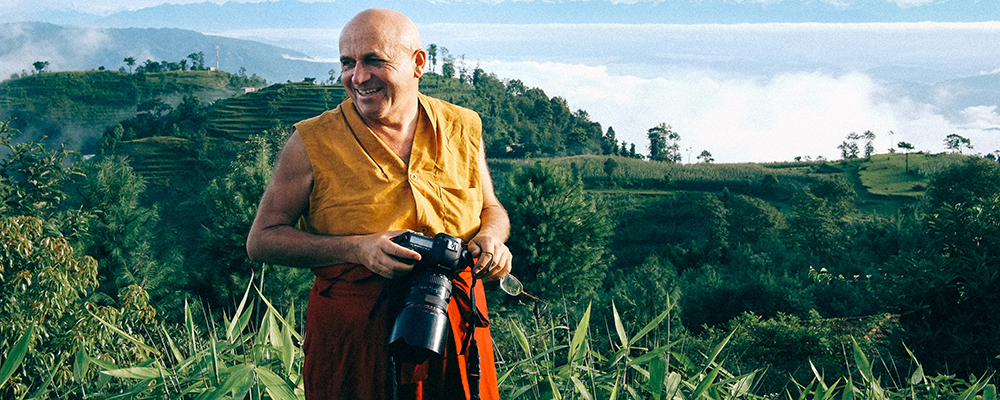
On the occasion of the publication of my first photo book, Journey to Enlightenment (now reprinted as The Spirit of Tibet, Aperture, New York) Henri Cartier-Bresson most kindly sent me this note :
“Matthieu’s camera and his spiritual life make one, and from this spring these images, fleeting and eternal.” (Henri-Cartier Bresson 12 November, 1995)
For me, photography is a hymn to beauty. I began to photograph when I was fifteen years old, with my friend André Fatras, an animal photographer, adventurer and lover of nature.
In 1967, I traveled to Darjeeling in India to meet my first spiritual teacher. After he died in 1975, I spent twelve years with Dilgo Khyentse Rinpoche, who was the archetype of the spiritual teacher, and traveled with him in Bhutan, India, Nepal, and Tibet. Over the years, I have taken photographs of my teachers and of the world around them. My main aspiration in doing so was to share the incredible beauty, strength and depth of their world. I have photographing primarily in Bhutan, India, Tibet, Nepal, and Thailand.
According to the Buddhist teachings, the buddha-nature is present in every living being and the natural state of one’s mind, when it is not misconstrued by the power of negative thoughts, is perfection. Positive qualities, such as a good heart, are believed to reflect the true and basic fabric of human beings. In photography, my hope is to show the beauty of human nature.
Even during intense suffering there can be dignity and beauty, even in the face of destruction and persecution there can be hope. This is particularly true for Tibet and its people, who have succeeded in retaining their joy, inner strength, and confidence while being subjected to a human and cultural genocide. For me, it is essential to inspire hope and confidence, since it is what we lack most and need most. I may not take a photograph for months. Then comes the day when people, places, and light arise in such a beautiful way that I can’t resist making an image of it with the wish to share it with others.
I have attempted to open a door into a world both ancient and yet remarkably relevant to our times; and to provide a glimpse from the inside of a Tibetan Buddhist teacher’s life and a unique culture that, despite the upheavals in its homeland, still survives in all its authenticity.
Excerpts from an interview with the Sunday Telegraph
ST: What strikes me – what strikes everyone, I’m sure – is the depth of contentment and happiness etched on the faces in these photographs. I wonder if you have any thoughts about how this reflects their Buddhist practice and beliefs.
MR: Indeed, the main power of inspiration of the portraits is that these teachers, hermits, and yogis are living examples of what they teach. The messenger has become the message. What they show outwardly is what they are within, without contradictions. The fact that we do perceive this is comforting and inspiring. The contentment and happiness reflected by their faces expresses a deep sense of serenity and fulfillment that arises from an exceptionally healthy mind.
ST: And also about the relationship between nature and spirituality – is it possible to feel anything other than spiritual when confronted by the awe-inspiring natural beauty depicted in these pictures?
MR: It is certainly an amazing experience to be in many of those places in Tibet. The intense depth of the silence, the immensity of the landscape, the deep blue of the sky, the crisp air…. is such that when you simply sit there, you feel that you don’t ever want to ever leave, but rather remain in this deep and limpid harmony between the environment and your own serene mind. It is even a more amazing experience to be in the presence of beings whose hearts are entirely filled with altruism and wisdom, and to try to mingle your mind with their minds.
So, landscapes and portraits can lead you from an understanding of outer beauty to that of the inner beauty of spiritual awakening and the boundless human qualities that accompany such awakening, as the warmth and light of rays naturally accompany the sun.